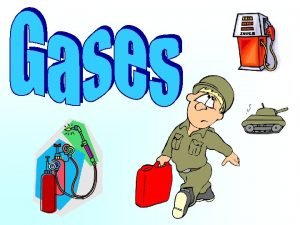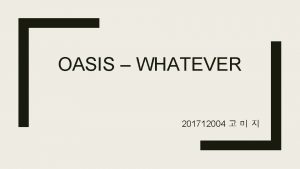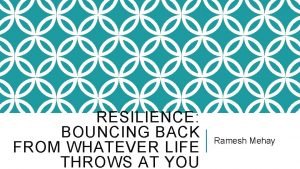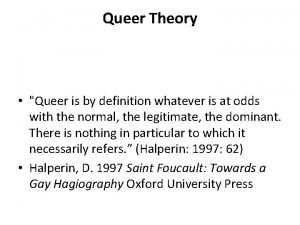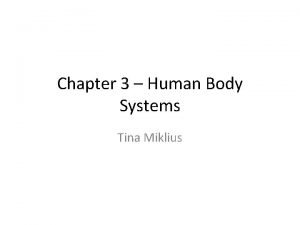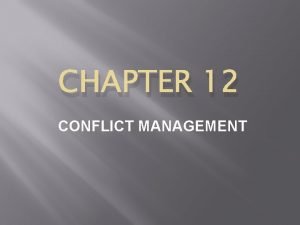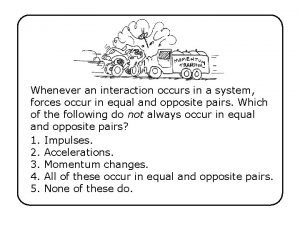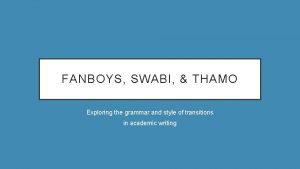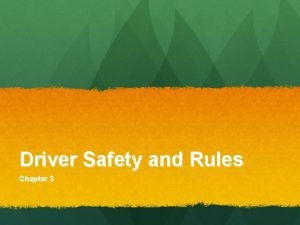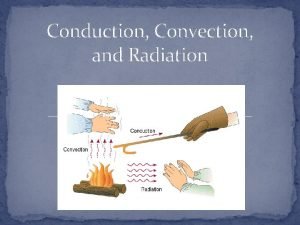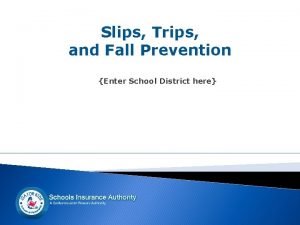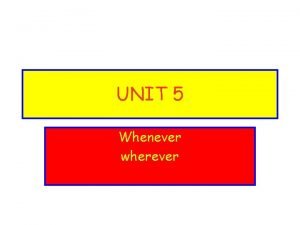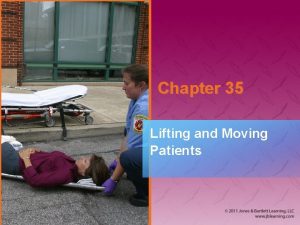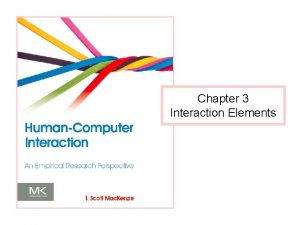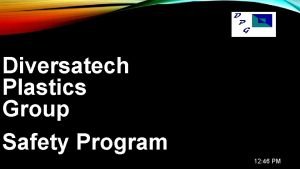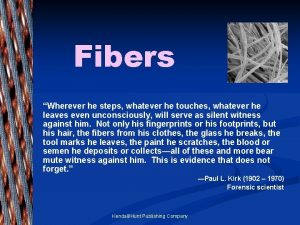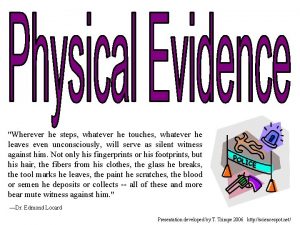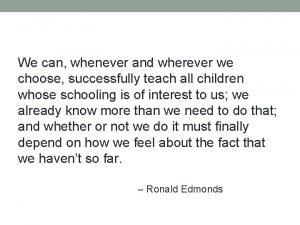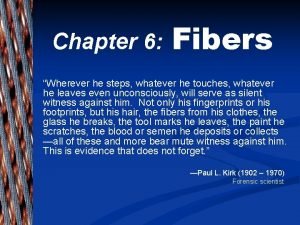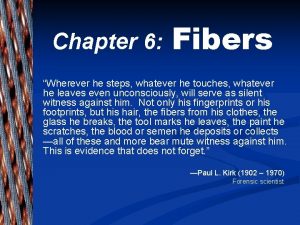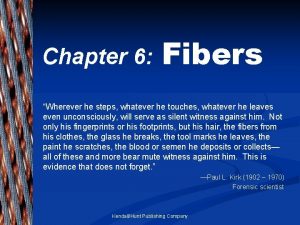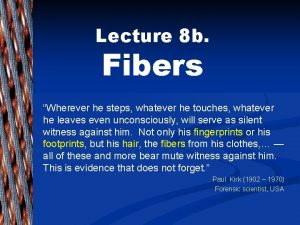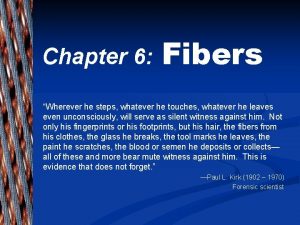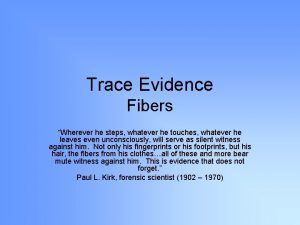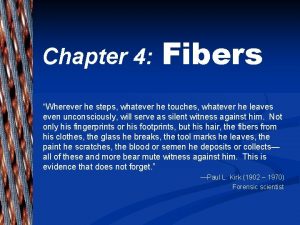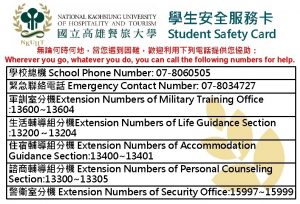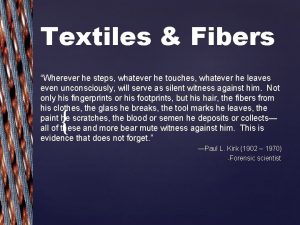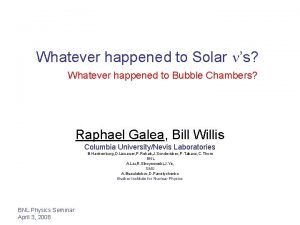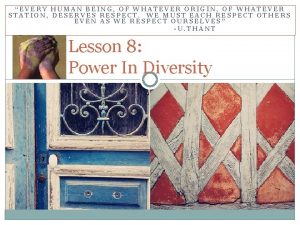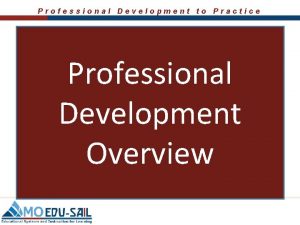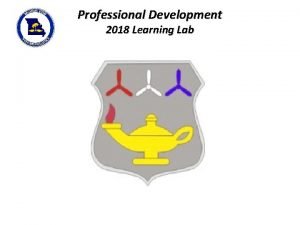Whatever Whenever Wherever A Professional Development Learning Module




































- Slides: 36

Whatever, Whenever, Wherever A Professional Development Learning Module on Digital Communication By Meribeth Fell

Digital Communication � “The electronic exchange of information. ” Ribble, M. & Bailey, G. (2007). Digital citizenship in schools. Washington D. C. : ISTE. p. 19.

Digital Communication � “The electronic exchange of information. ” � “These forms of communication have created a new social structure governing who, how, and when people interact. ” Ribble, M. & Bailey, G. (2007). Digital citizenship in schools. Washington D. C. : ISTE. p. 19.

Digital Communication � “The electronic exchange of information. ” � “These forms of communication have created a new social structure governing who, how, and when people interact. ” � “Digital communication provides users with instant access to others on an unprecedented level. ” Ribble, M. & Bailey, G. (2007). Digital citizenship in schools. Washington D. C. : ISTE. p. 19.

Focus Question How can TEACHERS and ADMINISTRATORS communicate more effectively with students using the technology that students already know?

Related Questions � What tools are we, as administrators, using to communicate with faculty, staff, parents, and other community members? � What tools are we, as teachers, using to communicate with colleagues, parents, and students? � What tools are our students already using that we often see as distractions from educational objectives?

NETS-A Standard II. B-C � NETS-A Learning and Teaching: Educational leaders ensure that curricular design, instructional strategies, and learning environments integrate appropriate technologies to maximize learning and teaching. Educational leaders:

NETS-A Standard II. B-C � NETS-A Learning and Teaching: Educational leaders ensure that curricular design, instructional strategies, and learning environments integrate appropriate technologies to maximize learning and teaching. Educational leaders: � B. facilitate and support collaborative technologyenriched learning environments conducive to innovation for improved learning.

NETS-A Standard II. B-C � NETS-A Learning and Teaching: Educational leaders ensure that curricular design, instructional strategies, and learning environments integrate appropriate technologies to maximize learning and teaching. Educational leaders: � B. facilitate and support collaborative technologyenriched learning environments conducive to innovation for improved learning. � C. provide for learner-centered environments that use technology to meet the individual and diverse needs of learners.

NETS-T Standard I. C-D � NETS-T Facilitate and Inspire Student Learning and Creativity: Teachers use their knowledge of subject matter, teaching and learning, and technology to facilitate experiences that advance student learning, creativity, and innovation in both face-toface and virtual environments. Teachers:

NETS-T Standard I. C-D � NETS-T Facilitate and Inspire Student Learning and Creativity: Teachers use their knowledge of subject matter, teaching and learning, and technology to facilitate experiences that advance student learning, creativity, and innovation in both face-toface and virtual environments. Teachers: � C. promote student reflection using collaborative tools to reveal and clarify students' conceptual understanding and thinking, planning, and creative processes.

NETS-T Standard I. C-D � NETS-T Facilitate and Inspire Student Learning and Creativity: Teachers use their knowledge of subject matter, teaching and learning, and technology to facilitate experiences that advance student learning, creativity, and innovation in both face-to-face and virtual environments. Teachers: � C. promote student reflection using collaborative tools to reveal and clarify students' conceptual understanding and thinking, planning, and creative processes. � D. model collaborative knowledge construction by engaging in learning with students, colleagues, and others in face-to-face and virtual environments.

Scenario � Mr. Wene, the primary social studies teacher for 9 th graders at Glynn Academy, agrees to use technology to enhance his regular face-to -face class as well as put one section online to accommodate the exceptionally large number of students in the new 9 th grade class. When he meets with the school instructional designer to work on his class, he resists ideas for engaging students in ways outside of his comfort zone.

Scenario Continued � Mr. Wene has been teaching social studies for 20 years, and his typical teaching style is lecture, test, and so on. Students always give him good reviews because as long as they have access to his lecture notes, they do well on the tests. He changes his tests every semester, but they basically cover the same material using multiple choice, matching, and one short answer question.

Questions to Participants � What objections or resistance to digital communication might a traditionalist like Mr. Wene give the instructional designer about the technology for his online class or his enhanced face-to-face class?

Scenario Continued � Mr. Wene believes he is successful because his students are successful on his tests. When asked how he plans to engage his students in the online section, he replies, “I will upload my lecture notes, provide podcasts of my lectures, and give online tests that are similar to my face-to-face tests. ” How could Mr. Wene improve student engagement in his online class?

Suggestions for Mr. Wene

Student Engagement � Are these students engaged in the class lesson?

Education or Entertainment? � Are these students actively learning or actively socializing?

Student Engagement � Who is more engaged?

Student Learning � Who is learning more?

Digital Communication Tools � You Tube � Wikis � Blogs � Instant Messaging � Text Messaging � Email � Podcasts � Google Docs � Facebook / My Space � Others?

Why Do WE Need to Change? � Student Engagement � The World is Changing � Our Students are Changing � Answers in today’s world aren’t always as simple as 22 -11=? � Why else do we need to change?

Our Students today. . . � are not the same as they were twenty years ago. � are not the same as they were ten years ago. � are not the same as they were five years ago. A Vision of Students Today http: //www. youtube. com/watch? v=d. GCJ 46 vy. R 9 o&feature=related

The Campus of Tomorrow

Is GOOGLE the future? � How can Google be an educational tool? � http: //www. google. com/intl/en/options/ � What are the negatives of Google in an educational environment?

Is You. Tube the Future? � How can You. Tube be used for class projects? � What are the dangers of You. Tube?

Is Blogger the Future? � How can students and teachers use Blogger as an educational tool? � What are the dangers of Blogger?

i. Tunes U � http: //www. apple. com/education/mobile- learning/ � � “Learning no longer happens only at a desk. Students now expect constant access to information, no matter where they are. Which is exactly why more and more faculty are using i. Tunes U to distribute digital lessons to their students. ” “Students are already coming to school with portable computers and devices such as an i. Phone and i. Pod in hand. So they’re used to gathering information on the web, getting their email, watching lectures, getting directions, or pinpointing exactly where their friends are — anytime and anywhere. Now they can learn anytime and anywhere, too. As educators all over the world are discovering, mobile learning works. Students devour engaging, customized curricula when it’s delivered on the i. Pod or i. Phone. It’s a familiar and essential part of their lives. Audio and video podcasts let students study at their own pace, wherever and whenever they want. “

Is i. Tunes U the future? � What are some benefits of using podcasts for educational purposes? � What is the downside of podcasts?

Is Facebook the Future? � If students “facebook” through class, how can teachers harness the power and the lure of Facebook to help students learn?

The Future is Your Choice! Are they “Facebooking” or interacting in a collaborative learning environment? Wouldn’t you rather ask that question than face a classroom like this?

Return to the Focus Question How can TEACHERS and ADMINISTRATORS communicate more effectively with students using the technology that students already know?

Related Questions � What tools are we, as administrators, using to communicate with faculty, staff, parents, and other community members? � What tools are we, as teachers, using to communicate with colleagues, parents, and students? � What tools are our students already using that we often see as distractions from educational objectives?

Final Questions � How can we engage students in our classes, both online and in a face-to-face environment using digital communication? � How can we reduce the negatives associated with digital communication technology? � Are you listening to your students?

Final Assignment � Create a lesson using one of the digital communication tools discussed (or another one not discussed) and post your lesson pbwiki. com, Our community (teachers, parents, students, and administrators) will judge each lesson for its innovation, creativity, usefulness, and effectiveness. The winner will receive a prime parking spot in the faculty/staff lot and will receive a $500 stipend for use in professional development in technology or for the purchase of technology to be used for teaching.
 I will follow you follow you wherever you go
I will follow you follow you wherever you go Finally brothers whatever is true
Finally brothers whatever is true Do gases exert pressure on whatever surrounds them
Do gases exert pressure on whatever surrounds them Do gases exert pressure on whatever surrounds them
Do gases exert pressure on whatever surrounds them Lasciviousness definition
Lasciviousness definition Whatever you tolerate will dominate
Whatever you tolerate will dominate Oasis free to be whatever
Oasis free to be whatever Whatever system
Whatever system Poem about clothes
Poem about clothes Whatever text
Whatever text Good morrow summary
Good morrow summary Hello boys and girls or whatever
Hello boys and girls or whatever Spring tongue twisters
Spring tongue twisters Whatever life throws at you meaning
Whatever life throws at you meaning Whatever i think the opposite happens
Whatever i think the opposite happens Commandments in animal farm
Commandments in animal farm Queer theory
Queer theory Whatever things
Whatever things Whatever
Whatever Cuadro comparativo e-learning b-learning m-learning
Cuadro comparativo e-learning b-learning m-learning C device module module 1
C device module module 1 A diver is 30 metres/99 feet underwater
A diver is 30 metres/99 feet underwater Non national loyalties
Non national loyalties Conflict occurs whenever
Conflict occurs whenever Whenever the weather
Whenever the weather An interaction occurs whenever:
An interaction occurs whenever: A leaping frog is an example of which type of motion
A leaping frog is an example of which type of motion Thamo in a sentence
Thamo in a sentence Whenever possible, child car safety seats should be placed
Whenever possible, child car safety seats should be placed Heat energy is transferred by conduction whenever molecules
Heat energy is transferred by conduction whenever molecules Whenever there is too little friction or traction
Whenever there is too little friction or traction An interaction occurs whenever:
An interaction occurs whenever: Whenever or when ever
Whenever or when ever 11factorial
11factorial Power grip emt
Power grip emt An interaction occurs whenever
An interaction occurs whenever Ghs pictograms
Ghs pictograms



